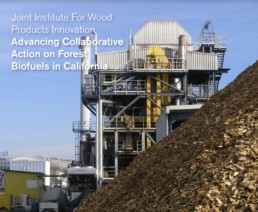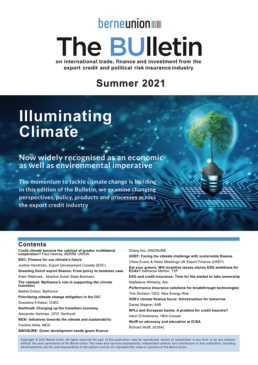New Energy Risk Announces Milestone as Clients Raise $3B in Capital, Also Announce Senior Promotions
Paragon Press Release: New Energy Risk Announces Milestone as Clients Raise $3B in Capital, Also Announce Senior Promotions
AVON, Conn., August 18, 2022 —New Energy Risk (NER), a wholly-owned division of Paragon Insurance Group, on June 30 surpassed $3 billion in capital raised by clients since inception, a pivotal marker as the company continues to support the deployment of innovative technology solutions to address climate change and other global challenges.
Learn more about this achievement in NER’s announcement, and more about some of NER’s clients via its case studies.
“This $3 billion milestone demonstrates the success of our products and underscores our commitment to ‘Underwriting a Greener Future,’” NER Chief Executive Officer Tom Dickson said. “We are at the forefront of providing insurance solutions to the innovators who are accelerating the green energy transition. The capital they raise is an indication of rapidly increasing investor demand for positive impact.”
Building on this momentum, NER is announcing that Chief Actuary Sherry Huang, a seven-year veteran of the company, is expanding her role to also support transaction approval and execution as chief actuary and managing director of underwriting development. Brad Price is being promoted from principal engineer to managing director of technical due diligence. Brentan Alexander has stepped down as president of NER and will be joining an emerging technology firm in the coming weeks. He has been a key leader in the success of NER since joining in 2012 and will remain involved as a consultant to NER for an extended period of time.
“Congratulations to the NER team and to Brad and Sherry on their additional responsibilities and to Brentan on his new endeavor,” said Andy Borst, Paragon’s president of E&S and International. “The $3 billion in capital raised is a major achievement that confirms NER as a leader in providing innovative solutions and underscores Paragon’s commitment to investing in and supporting businesses that help address climate change and other global challenges.”
About New Energy Risk
New Energy Risk is a pioneer of large-scale, breakthrough technology performance insurance solutions. The company provides complex risk assessment and serves as a bridge between technology innovators, financiers, and insurers. Insurance policies are administered through New Energy Risk affiliate Complex Risk and Insurance Associates, LLC, CA License #0I24307.
About Paragon
Paragon Insurance Holdings, LLC, formed in 2014, writes all commercial lines of insurance across more than 20 programs. Paragon’s industry-specific and general underwriting facilities offer insureds, retail agents, carriers, reinsurers and service providers unique product, service, capability, and results. Visit: https://www.paragoninsgroup.com/.
###
New Energy Risk Clients Surpass $3 Billion of Capital Raised for the Energy Transition
New Energy Risk Clients Surpass $3 Billion of Capital Raised for the Energy Transition
New Energy Risk supports the financing of innovative technologies solving global challenges. Today we are pleased to announce that we have helped our clients raise over $3 billion of capital for their projects and assets—bridging the gap between development and commercial scale deployment—from capital providers including Goldman Sachs, J.P. Morgan, Morgan Stanley, KeyBank, NY Green Bank, Crédit Agricole, and others. By enabling access to deeper pools of capital and lowering the cost of that capital, New Energy Risk is Underwriting a Greener Future™.
The $3 billion in capital raised by our clients represents a sizable investment to scale breakthrough, commercially viable technologies. However, we are just getting started. To tackle our climate crisis, we know that thousands of billions of dollars are needed. Project finance and asset finance transactions with performance insurance are critical for advancing innovation, and New Energy Risk is in a unique position to provide this valuable support.
Our clients entrust us with privileged information about their technologies and businesses and we have the acumen to understand this better than traditional financiers. We know what risks those financiers are (and are not) willing to take. With our help, financiers can make more confident decisions to invest in cutting edge technologies that they may have otherwise overlooked.
This investor confidence stems from the protection from losses associated with underperformance that our bespoke risk transfer solutions provide. By transferring risk from the capital markets to the insurance markets, we enable and make less expensive the investment needed to advance novel technologies. Faster and cheaper capital accelerates our clients’ time to market, meaning their technologies, equipment, and projects are sold, financed, and operating at commercial scale sooner. After all, the energy transition cannot wait.
In a sense, we grease the wheels of a traditionally lengthy financing process, moving our clients and their customers toward deployment as quickly as possible with minimal disruptions to their operations. And now with a $3 billion track record, we are as confident as ever in offering our clients The Power of Certainty™. Read more about our clients’ outcomes in our case studies, and contact us today to discuss your project transaction.
###
NER Acquired by Paragon Insurance Holdings
Paragon Acquires Greener Future and ESG-focused New Energy Risk
AVON, Conn., March 17, 2022 (SEND2PRESS NEWSWIRE) — Paragon Insurance Holdings, LLC, a national MGA based in Avon, Connecticut, announces today the acquisition of New Energy Risk (NER), an insurance solutions provider to a wide range of energy technologies and related infrastructure projects and technologies that accelerate the energy transition.
The deal represents Paragon’s latest expansion into the global specialty Excess & Surplus lines market and brings additional high-rated reinsurance capacity providers supporting the ongoing build out of its portfolio.
“We’re excited to welcome NER to Paragon,” Ron Ganiats, CEO and co-founder of Paragon said. “With NER’s talent, carrier and reinsurance following, we will now be at the forefront of providing insurance solutions to the technology and project leaders that continue to move into the energy space.”
The announcement comes amid a strong period of growth for NER on the back of rising demand for its unique risk assessment and underwriting services. NER, in a push toward Underwriting a Greener Future™, continues to develop new products to meet shifts in the economy as energy sources transition toward sustainability and industries decarbonize. The company has also implemented its own Environmental, Social and Governance (ESG) client framework during this critical period to better respond to these market trends.
“We understand the needs of energy technology companies, project developers and investors in this space. We translate the ‘arcane’ insurance market on their behalf and deliver what they need to secure cost-effective project finance and expedite customer adoption,” Tom Dickson, CEO of NER, said.
NER was founded in 2010 by Tom Hutton, former CEO of RMS and White Mountains Re, in partnership with then XL Group. In 2015, XL Innovate (XLI), an insurtech venture fund, was formed. NER became XLI’s first portfolio company. NER had been operating as a majority-owned subsidiary of AXA under its AXA XL brand.
“NER is at an inflection point,” said Hutton, who will remain involved as an advisor after the acquisition. “We are all committed to investing in its continued growth and to see the impactful results of its products and services, especially given the transformative support of Paragon.”
###
NER Included in Report: Advancing Collaborative Action on Forest Biofuels in California
New Energy Risk Included in Report: Advancing Collaborative Action on Forest Biofuels in California
Matt Lucas participated in a working group addressing climate change, wildfire risk, and environmental justice to contribute to this report published by the Joint Institute For Wood Products Innovation.
Read the full publication here.
Low-carbon and carbon-negative fuels from non-merchantable forest biomass can help California attain its greenhouse gas (GHG) reduction targets and offer an opportunity to support sustainable forest restoration activities to reduce wildfire risk. Development and deployment of these innovative wood products can help the state of California increase the pace and scale of forest restoration efforts, strengthen regional capacity, support innovation, reduce vulnerability to wildfire, and promote carbon storage in long-lived products, including geologically sequestered CO2. These fuels can also play a pivotal role in California’s world-leading ambition to address climate change.
Yet successful commercialization of low- and carbon-negative fuels from forest biomass is far from certain, despite existing policy support. Fundamental challenges relate to the inability to secure long-term feedstock contracts from public lands, exclusion of forest biomass from public lands under the federal Renewable Fuels Standard, supply from municipal and agricultural biomass markets, and a lack of biofuels infrastructure situated near California’s forested communities. Without meaningful effort from relevant state and federal policymakers, California risks missing the opportunity to develop and deploy these fuels.
New Energy Risk Announces Collaboration with Markel® to Support Dramatic Growth of Bloom Energy Fuel Cell Installations
New Energy Risk Announces Collaboration with Markel® to Support Dramatic Growth of Bloom Energy Fuel Cell Installations
Increasing demand for clean and reliable power illustrates the rapidly growing ESG and energy transition sectors supported by New Energy Risk
January 19, 2022
New Energy Risk (NER), a member of the AXA XL group of companies, announced a new collaboration with Markel to help meet the surge in demand for Bloom Energy fuel cell technology in the United States and internationally. In this collaboration, NER underwrites and structures performance insurance solutions that are issued by a member company of Markel and backed with capacity from among the world’s largest insurance and reinsurance companies.
Bloom Energy’s leading solid oxide fuel cell technology provides clean reliable and cost-predictable on-site power. Since 2013, policies supported by NER and underwritten by AXA XL have insured fuel cell capacity in both the United States and South Korea. NER’s insurance solutions are based on sophisticated analysis of Bloom’s strong technology performance, which has enabled investors to access cost-effective financing for installations and allowed these investors to stretch their capital over more projects. Of the policies already written under this new collaboration between NER and Markel, nearly $300M of project costs have been backed by $220M of insurance capacity.
This announcement coincides with NER’s swift growth as the demand for other sustainable technologies, and their corresponding risk transfer needs, accelerates globally. Project financing is increasingly flowing to emerging energy and other technology innovations to meet environmental targets as industries decarbonize in the fight against the climate crisis. NER is Underwriting a Greener Future™ by further developing new products to meet shifts in demand.
“Risk transfer for fuel cell performance is one of the many ways that New Energy Risk is advancing a cleaner future, and collaboration with Markel represents an increasing appetite in the insurance industry for such technologies,” said Tom Dickson, CEO of New Energy Risk. He continued, “We are very pleased to have collaborative, longtime partners including Markel, with whom we will continue to build a more sustainable world.”
“As a pioneering leader in new energy performance insurance solutions, AXA XL is excited to see New Energy Risk’s continued growth and, with Markel’s added support, greater industry involvement,” said Scott Gunter, AXA XL CEO. “Collaboration like this is what needs to happen to help our clients address climate change risks and prepare for a net-zero future.”
“Markel is very pleased to be supporting the use of fuel cell technology both in the United States and around the globe with innovative insurance products,” said Rob Whitt, managing executive corporate development for Markel. “We have stood alongside New Energy Risk for many years in our reinsurance division, and this new collaboration recognizes our shared belief that performance insurance is a powerful tool for helping solve global challenges in energy and beyond.”
About New Energy Risk
New Energy Risk is a pioneer of large-scale, breakthrough technology performance insurance solutions. Founded in 2010, the company provides complex risk assessment and serves as a bridge between technology innovators, financiers, and insurers. Insurance policies are administered through New Energy Risk affiliate Complex Risk and Insurance Associates, LLC, CA License #0I24307. To learn more, visit www.newenergyrisk.com.
About Markel
Markel is a diverse financial holding company serving a variety of niche markets. The company’s principal business markets and underwrites specialty insurance products. In each of the company’s businesses, it seeks to provide quality products and excellent customer service so that it can be a market leader. The financial goals of the company are to earn consistent underwriting and operating profits and superior investment returns to build shareholder value. Coverage is underwritten by one or more insurance company subsidiaries of Markel. Visit Markel on the web at www.markel.com. Markel® is a registered trademark of the Markel Corporation.
About AXA XL
AXA XL provides insurance and risk management products and services for mid-sized companies through to large multinationals, and reinsurance solutions to insurance companies globally. We partner with those who move the world forward. To learn more, visit www.axaxl.com.
New Energy Risk Announces the Promotion of Dr. Brentan Alexander to President in Response to Continued Business Acceleration
NER is positioned to further capitalize on tremendous growth in the ESG and energy transition sectors
SAN FRANCISCO, Nov. 8, 2021 /PRNewswire/ -- New Energy Risk (NER), a member of the AXA XL group of companies, announced the promotion of Dr. Brentan Alexander to president. This strategic appointment recognizes his nine years of contributions to NER's success, including in his former roles as chief science officer and chief commercial officer. In this new position, Dr. Alexander leads the company's near-term strategy, operations, and product execution, leveraging NER's platform to address rapidly increasing demand for NER's insurance solutions and services given the accelerating proliferation of new technologies.
Dr. Alexander's appointment is representative of NER's central role in driving the scale of new energy technologies in 2021, during which the company:
- surpassed $2.8B in aggregate client project capital supported by over $1.4B of insurance capacity;
- realized greater revenue by Q3 than in any prior year since its founding in 2010; and
- hired three new full-time staff members to support business development, actuarial modeling, and client diligence.
The company is experiencing a rising need for its unique risk assessment and underwriting services, particularly with dramatic increases in capital flowing into emerging technologies in the energy transition and other ESG-related sectors. NER is Underwriting a Greener Future™ by further developing new products to meet shifts in the economy as energy sources transition toward sustainability and industries decarbonize. The company has also implemented its own ESG client framework during this critical period to better respond to these market trends.
To facilitate NER's rapid progress, the company also announced the promotion of Dvorit Mausner to managing director, operations. In this new role, Ms. Mausner provides key strategic and tactical support across all business functions. Tom Dickson, CEO of New Energy Risk, will continue to provide his leadership for expanded strategic relationships with NER's key partners, focused on insurance capacity, product expansion, and long-term strategy.
On NER's accelerating business momentum, Mr. Dickson remarked, "The future for New Energy Risk is very bright as we both strengthen and expand our business across new sectors and geographies. By adding to and promoting from within our team, we are able to streamline operations for an increasing number of clients who recognize NER's expertise in emerging technology risk transfer."
Tom Hutton, chairman and founder of NER, added, "New Energy Risk is advancing a cleaner future through its performance insurance solutions. It is no wonder that business is booming as more capital is prioritized for ESG investments. Brentan's promotion is a wonderful next step in the evolution of New Energy Risk as it grows significantly to meet this demand for impactful technologies addressing global challenges."
About New Energy Risk
New Energy Risk is a pioneer of large-scale, breakthrough technology performance insurance solutions. Founded in 2010, the company provides complex risk assessment and serves as a bridge between technology innovators, financiers, and insurers. Insurance policies are administered through New Energy Risk affiliate Complex Risk and Insurance Associates, LLC, CA License #0I24307.
About AXA XL
AXA XL provides insurance and risk management products and services for mid-sized to large multinational companies, and reinsurance solutions to insurance companies globally. As a leading global insurer, AXA XL offers services in over 200 countries and territories for 90% of Fortune 500 businesses.
AXA XL Publishes its 2020 Sustainability Report
We are proud to be featured on page 8 of AXA XL's 2020 Sustainability Report, recognizing our work with breakthrough low-carbon technologies.
Below is the text of NER's feature. Also check out Sustainability at a Glance, an abridged version of the report for clients and brokers.
Encouraging sustainable practices through our products
At AXA XL we’re continually seeking ways to help our clients address insurance challenges that also align with our sustainability initiatives.
Our Environmental team in France is working with Marsh to assess and mitigate biodiversity-related risks. Clients are invited to complete environmental risk prevention audits with measurable criteria, and those with industrial sites are encouraged to carry out initial biodiversity diagnostics and integrate the results into their risk management plan. AXA XL France offers a reduction on clients’ deductibles for environmental risk policies to support clients’ efforts to be responsible.
In 2020, the North American Environmental team added Green Building Materials Expense supplemental coverage to its Pollution and Remediation Legal Liability (PARLL) policy. This insurance coverage protects businesses against loss, remediation expense and legal defense expenses that may arise from sudden and gradual pollution conditions. Now businesses not only have the financial help to clean up a pollution incident, such as a fuel oil spill, they can take it a step further. With this added Green Building coverage, in the event of a pollution incident that causes property damage, clients can choose to use green, sustainable materials in the property’s restoration.
AXA XL’s North America Construction business has developed tailored Builders Risk insurance programs to address clients’ mass timber project risks. Mass timber, which includes cross-laminated timber (CLT) is gaining popularity in North America. It’s also considered a more sustainable building material; according to the Wood Council, replacing steel with mass timber would reduce carbon dioxide emissions by 15% to 20%. The process of manufacturing timber uses substantially less fossil fuel energy per unit volume than steel, concrete, or aluminum, meaning that timber has a lower carbon footprint.
As part of AXA XL’s commitment to developing sustainable products, we’re committed to exploring new opportunities. An example of this is our work with The Nature Conservancy (TNC), a global environmental nonprofit, and The University of California, Santa Cruz. In October this collaboration resulted in the launch of a feasibility report on developing a mangrove insurance product. The report, Reducing Caribbean Risk: Opportunities for Cost-Effective Mangrove Restoration and Insurance, identifies 3,000 km of coastline across 18 countries in the Caribbean region where poststorm mangrove restoration would provide flood protection benefits that significantly outweigh the cost of mangrove rehabilitation. The report outlines how an insurance product could be designed to finance this restoration and the conditions needed to bring the product to market. Phase two is underway to identify potential pilot sites and scope product development.
Another example of an evolving area of work for AXA XL is our development of a ‘Circular Economy’ product. We are currently assessing opportunities for AXA XL to offer a product or service that reduces waste in the event of a client’s loss, encourages our clients to follow sustainable practices and enables a ‘Circular Economy’, where materials re-enter the supply chain or are otherwise reused or recycled.
In addition, New Energy Risk (NER), a member of the AXA XL group of companies, continues to develop performance insurance solutions for the technical risk associated with breakthrough low-carbon technologies (e.g. renewable energy, fuel cells, energy storage, energy efficiency, carbon capture, hydrogen, waste to energy, and biofuels). This is possible thanks to NER’s proprietary and bespoke risk modeling and assessment. Products include solutions for performance insurance, warranty backstops, and business interruption insurance. These ultimately seek to reassure customers and/or financiers who would otherwise not accept new technology performance risk.
NER-supported clients have unlocked over $2bn in capital for their sustainable technologies, companies, and projects, supported by over $1bn in total insurance capacity. By enabling capital efficiency, new technologies go more quickly from development to deployment and commercial scale, with widespread customer adoption. Aggregated NER client projected results include:
- 449,000 tons/year waste processed
- 695,000 MWh/year clean energy generated
- 50 million gal/year alternative fuel produced,
- and 320,000 tons/year CO2e avoided
NER's CSO/CCO Quoted in Utility Dive
New Energy Risk is pleased to share that CSO/CCO Brentan Alexander is quoted in Utility Dive, a website and newsletter covering the utility industry.
Read about why long-duration energy storage is key to US decarbonization goals and how "our entire goal [at NER] is to make these technologies possible."
DOE eyes AI, machine learning to accelerate long-duration energy storage research
###
NER Featured in Berne Union's The BUlletin
New Energy Risk is pleased to have been featured by Berne Union in its latest issue of The BUlletin, Summer 2021: Illuminating Climate.
Berne Union is the leading global association for the export credit and investment insurance industry. The BUlletin is a bi-monthly digest of news, views and statistics from the global export credit and investment insurance industry, curated by the Berne Union.
"Innovative sustainable technologies may find it a challenge to access affordable finance through traditional routes, partly because they are new and untested, even if performance risk is likely to be low. Tom Dickson, CEO at New Energy Risk, explores risk transfer solutions through insurance and looks at how technology risk can be transformed into credit risk."
View NER's article in The BUlletin here. The full text is included below:
Performance Insurance Solutions for Breakthrough Technologies
Mitigating and reversing climate change is arguably the greatest opportunity for innovation ever seen by humanity. Technology developers and their partners are stepping up to this enormous challenge with creative solutions that are both impactful and commercially viable. However, new technology comes with risks and uncertainty, both real and perceived.
Common doubts for technology advancement stem from new technologies’ lack of extensive long-term performance data at a commercial scale. This hinders teams from securing low-cost capital, getting to market, and achieving mass customer adoption.
Traditionally, a project developer attracts low-cost debt financing to a project by transferring key risks, including budget, timeline, and performance risks, onto other counterparties. For most large-scale infrastructure projects, an engineering, procurement, and construction (EPC) contractor will assume these risks through lump-sum fixed-price contracts or guaranteed max-price contracts. Only the most proven technologies, with known costs and construction timetables, can attract project finance without these ‘wrapped’ EPC setups.
Unfortunately, EPCs are limited in their ability to provide performance guarantees for technologies or processes that they have not previously built or delivered. This leaves an unmitigated risk in place for first-commercial projects that capital providers are poorly positioned to understand. For many of these projects, the actual performance risk is low, but the perceived risk from the EPC or capital provider prevents access to low-cost financing.
Insurance as a solution to transform tech risk to credit risk
However, this performance risk – when evaluated by an underwriter with sufficient technical expertise to understand the technology – can be mitigated through an insurance policy, enabling more efficient financing.
This risk transfer is an excellent solution to advance new and lesser-known technologies. Allay the concerns of investors and customers via an insurance policy that protects the insured technology from a performance failure, in effect transforming technology risk to the credit risk of an insurer. From this risk transfer, financiers and customers rest assured, and previously inaccessible low-cost capital is unlocked.
Practical example: Sierra BioFuels
As a case study, consider Sierra BioFuels, a project of Fulcrum BioEnergy, a first-of-its-kind initiative which aims to convert 175,000 tons of household garbage into 10.5 million gallons of ultra-low carbon fuel each year. Like many startups in the cleantech industry, Fulcrum was seeking low-cost financing from institutional capital sources to drive its growth. These sources are reluctant to lend when working with first-of-a-kind projects, and are ill-suited to understand the performance risk of new facilities with no commercial-scale analogue.
Our firm, New Energy Risk (NER), a California-based majority-owned indirect subsidiary of AXA SA (‘AXA’), operating under the global brand division of AXA XL, quantified these risks by bringing both a financing and an engineering understanding to risk assessment. Working with a dedicated team of engineers, scientists, and insurance professionals, NER performed detailed diligence on the technology, structured an insurance policy that met lender needs, and worked with AXA XL to execute the policy in support of the project.
In the event of a failure at Sierra BioFuels, projected performance data allowed NER to determine how long it would take to alleviate and whether there would be enough capital to handle the problem. NER also assessed whether delays could cause a shortfall in output great enough to impact loan covenants and debt payments.
NER’s insurance and warranty solutions helped Fulcrum BioEnergy attract financing options that were previously closed to them. We created a custom-built insurance policy that assessed and covered the risk of underperformance, helped pave the way for product adoption, and ensured that future financing would be minimally dilutive.
Through our partnership, Fulcrum BioEnergy secured over $175 million in bond financing for its Sierra BioFuels project. Ultimately, they estimated that our performance insurance solution saved them 2% annually on their 20-year bonds, equaling $35 million in savings.
Performance insurance to help sustainable projects scale
Performance insurance solutions can similarly support a wide range of energy technologies and related infrastructure projects and technologies that have a major impact on our world, from reducing emissions, to creating more sustainable fuels, to finding new uses for municipal and industrial wastes, to new models for low-carbon transportation. To meet today’s environmental challenges, it is imperative that these technologies scale to accelerate a more sustainable society.
The projected growth in capital investment is at historic levels for climatetech. This investment capital is coming from the private sector: the largest institutional and fund investors, venture capital, growth capital investors, public market investors, and yes, insurance companies. And it is also coming from the public sector, driven by new legislation and carbon-free mandates across many states, countries, and international organizations.
Many insurers have publicly committed to targets aligned with the Paris Agreement and to collectively investing many tens of billions of dollars in renewable energy over the coming years. We support this proactive step to advance sustainable innovations and technologies and are proud to be a part of the insurance industry as it evolves with our changing world.
Describing what insurers will do, not just what they won’t
Sustainability-focused insurers have generally described what they will not do: by limiting or withdrawing underwriting capacity from activities that contribute excessively to greenhouse gas emissions, like coal. However, insurance is inherently set up to lead in sustainability by deciding what we will do. As an industry, we need to send a clearer message about our unique core competences: risk assessment, risk selection, and the permanent capital to hold and manage these illiquid risks. Insurers can take advantage of these core competencies to expand and promote underwriting capacity for activities that contribute to the reduction of emissions as well as other sustainability measures. Reversing the script from ‘won’t’ to ‘will’ can allow the insurance industry to embrace its potential for leading sustainability efforts.
A new class of risk
NER follows this ‘green underwriting’ approach – a more forward-leaning perspective on sustainability in the insurance industry. We believe that the insurance industry is uniquely situated to deploy its risk capital to support new technologies and business models and advance their sustainability impact.
By transferring specific and carefully calibrated technology and financial risks to the insurance markets, more technologies can access efficient capital (faster, minimally dilutive and optimally priced), accelerate their time to market, and achieve commercial scale (with greater customer adoption).
This new class of risk brought to the insurance market will better help address major environmental issues while diversifying the insurer risk book and attracting significant premium volumes, as well. This approach can benefit a variety of industries including renewable energy, fuel cells, energy storage, energy efficiency, waste to energy, biofuels and chemicals, nuclear technologies, power generation, water treatment, indoor farming, industrial processes, carbon capture, biomass processing, anaerobic digesters, grid technologies, and more.
Within our own firm, NER has already paved the way through $1.3 billion in total insurance capacity deployed to date for clients ranging from Bloom Energy (a leading supplier of solid-oxide fuel cells) to Brightmark (a plastic waste-to-product technology company). These policies have unlocked over $2.5 billion in capital for first-commercial technologies.
Furthermore, the contributions from these projects to sustainable economies include the processing of 449,000 ton/year of waste (producing valuable products like low-carbon fuels and waxes), the generation of 695 MWh/year of clean energy (powering the equivalent of 63,000 US homes), the production of 50 million gallons/year of alternative fuels (filling the equivalent tanks of over 88,000 US drivers), and the avoidance of 320,000 tons/year of CO2 equivalent (preventing harmful greenhouse gas emissions). Where new technology risk might have limited any of our client’s successful financing, an insurance solution provided better terms and faster outcomes.
Taking on the crisis of a changing climate is critical, but that does not mean investors are willing to make uninformed sacrifices. By offering bespoke risk analysis and risk transfer, insurance can enable technology developers and their partners to step up to this enormous challenge when we need it most – now.
Preview: Project Finance Playbook
This summer, NER is joined by Ross Mazur, impact MBA corporate sustainability fellow from Colorado State University. Ross, a mechanical engineer and project manager focused on renewable fuels, is learning and contributing across our business development and diligence teams. By the conclusion of his fellowship, he will have co-authored a company whitepaper, which he previews for us here.
By Ross Mazur; Impact MBA Corporate Sustainability Fellow
Behind the scenes at NER, we’re drafting a whitepaper, the Project Finance Playbook, which will demonstrate how project finance is often a superior method to finance capital intensive first commercial technology deployments. The Playbook is structured to be both accessible and actionable to startups in the emerging energy and carbon technology space.
The Playbook will recount a brief history of project finance (having roots in Roman cargo-carrying merchant voyages). It will also explore the opportunities inherent in project finance, including risk management and minimally dilutive completion of large capital intensive projects. It then discusses project finance conceptual theory, with an emphasis on overcoming interest alignment challenges via purpose-driven contractual structures. The next section, full of acronyms, walks through project finance key stakeholder contract types, including construction contracts. Debt and equity sizing and market assessment are then reviewed to help identify applicable lenders and investors. And that’s just the first chapter!
The second chapter walks through commercial requirements, focusing on market strategy, building a term sheet, and the role of project risk and a credit rating mindset to speed-up development cycles and decrease time to financial close. The third chapter describes technical requirements, going into the details of scale-up strategy and development program planning to be best suited for proving efficacy of a technology at commercial scale. The last chapter, “A Vision for Success,” connects the dots for an energy technologist (or project developer) to more confidently navigate the project finance process.
The Playbook will be out by the end of the summer and we look forward to sharing it with our network. We appreciate peer review and we would be glad to hear (and possibly reference!) your perspectives on the topic. Or if you are just excited about the concept and would like to be notified when the Playbook is released, subscribe to our newsletter or reach out to us at [email protected].
###









